Classification of Class: Aves, Sparrow, Crow, Parrot, Woodpecker
Title:- To study the classification with reasons of the following:-
Class: Aves, Sparrow, Crow, Parrot, and Woodpecker
General characteristics of class Aves:
- The body is boat-shaped and divisible into Head, neck, and tail.
- Skin is thin and dry, except for oil glands on the tail.
- Beak claws have a horny sheath. Teeth are absent.
- Endoskeleton is fully ossified, but they are delicate and light due to air cavities and sacs of Spongy nature.
- There are two pairs of limbs. Forelimbs are modified into wings for flight and bear three digits each. Hind limbs are large and strong.
- The mouth has a wide gap. The alimentary canal leads into a cloaca. The stomach is divided into the proventriculus and gizzard.
- Lungs are spongy and non-distensible.
- The heart is four-chambered, no sinus venosus and truncus arteriosus; only the right systemic arch is Present.
- The brain is large, and the olfactory lobes are reduced. There are 12 pairs of cranial nerves.
- Eyes are well developed with a large pecten.
- Kidneys are metanephric and three-lobed.
- Sexes are separate. Fertilization is internal.
- All birds are oviparous.
- Birds are homothermic animals.
1. Passer (House Sparrow):
Phylum: Chordata – Dorsal tubular nerve cord, notochord, and gill-slits are present.
Group: Craniata – Cranium with brain.
Subphylum: Vertebrata – Vertebral column Present.
Division: Gnathostomata – Jaws are present.
Class: Aves – Warm-blooded, exoskeleton of feathers, forelimbs are modified into wings, a horny beak, a heart with four chambers, oviparous, an embryo with amniotic fluid, allantois, and yolk sac.
Order: Passeriformes – Toes three in front and one behind; adapted for Perching; beak for cutting.
Genus: Passer
Species : domesticus
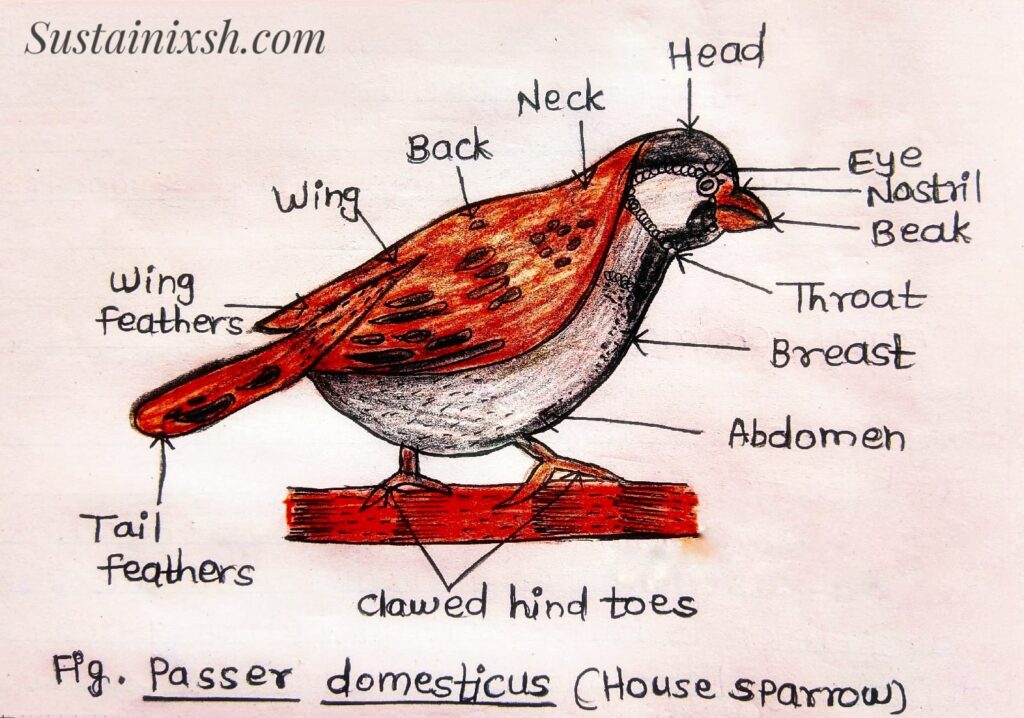
2. Corvus (Crow):
Phylum: Chordata – Dorsal tubular nerve cord, notochord, and gill-slits are present.
Group: Craniata – Cranium with brain.
Subphylum: Vertebrata – Vertebral column Present.
Division: Gnathostomata – Jaws are present.
Class: Aves – Warm-blooded, exoskeleton of feathers, forelimbs are modified into wings, a horny beak, a heart with four chambers, oviparous, embryo with amniotic fluid, allantois, and yolk sac.
Order: Passeriformes – Toes three in front and one behind; adapted for perching; beaks are adapted for cutting.
Genus: Corvus
Species : splendens
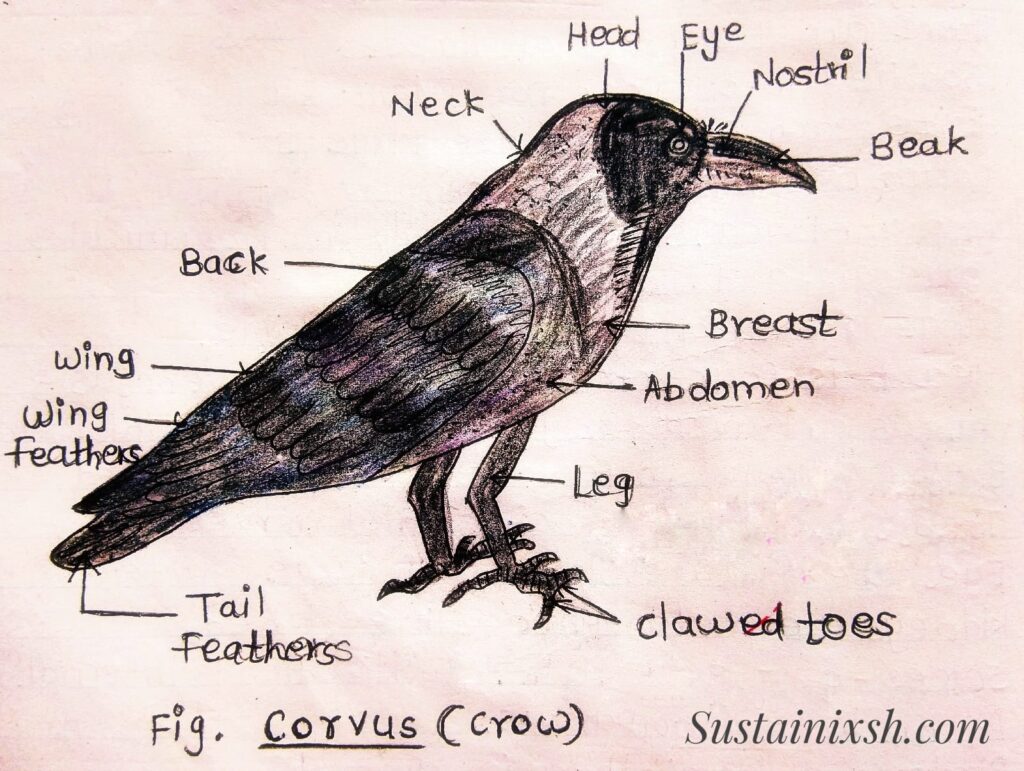
3) Psittacula (Parrot):
Phylum: Chordata – Dorsal tubular nerve chord, notochord, and gill-slits are present.
Group: Craniata – Cranium with brain.
Subphylum: Vertebrata – Vertebral column present.
Division: Gnathostomata – Jaws are present.
Class: Aves – Warm-blooded, exoskeleton of feathers, forelimbs are modified into wings, a horny beak, a heart with four chambers, oviparous, embryo with amniotic fluid, allantois, and yolk sac.
Order: Psittaciformes – Feathers are green, yellow, or red; beak Stout, sharp-edged, and hooked on the tip: feet zygodactylus (i.e, two toes in front and two toes directed backwardly)
Genus: Psittacula
Species : krameri
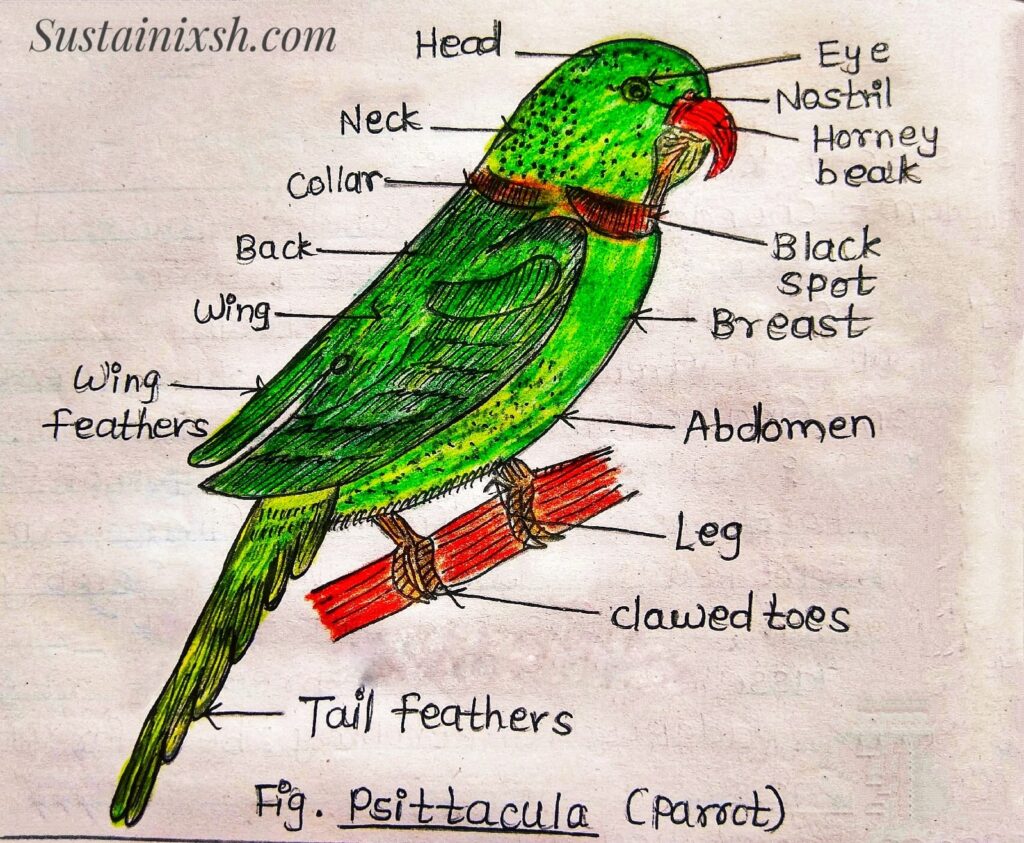
4) Dinopium (Woodpecker):
Phylum: Chordata – Dorsal tubular nerve cord, notocord, and gill-slits are present.
Group: Craniata – Cranium with brain.
Subphylum: Vertebrata – Vertebral column Present.
Division: Gnathostomata – Jaws are present.
Class: Aves – Warm-blooded, exoskeleton of feathers, forelimbs modified into wings, horny beak, heart with four chambers, embryo with amniotic fluid, allantois and yolk sac, oviparous.
Order: Piciformes – Tail feathers stiff with pointed tips; beak stout, tongue is protrusible; two toes in front and two toes behind.
Genus: Dinopium
Species : benghalense
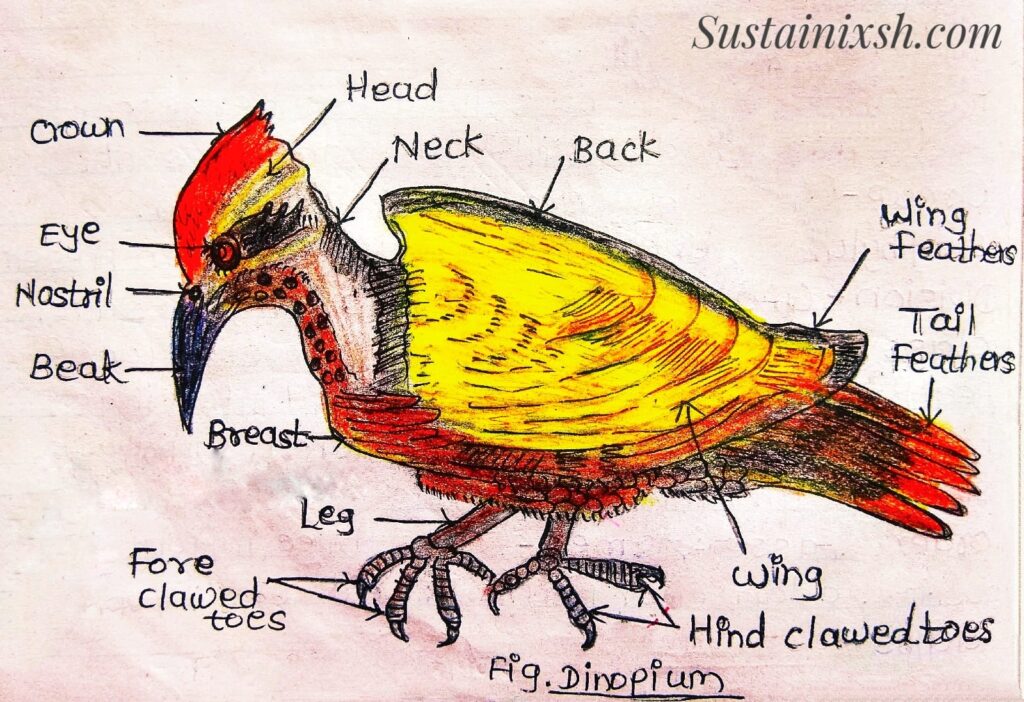

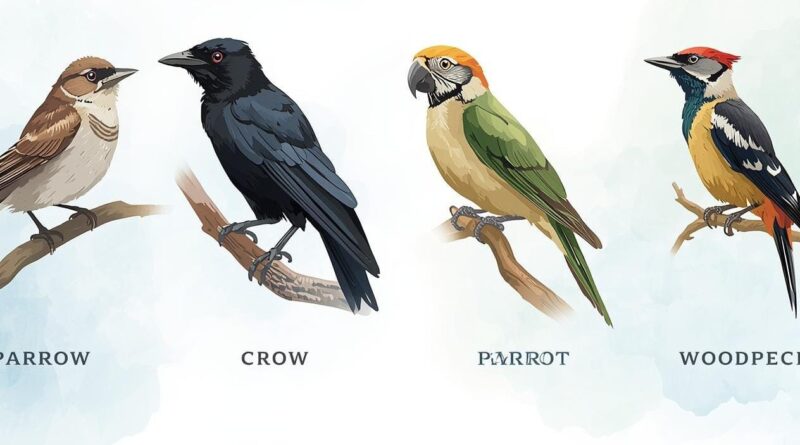



Amazed to know the intresting facts about aves.